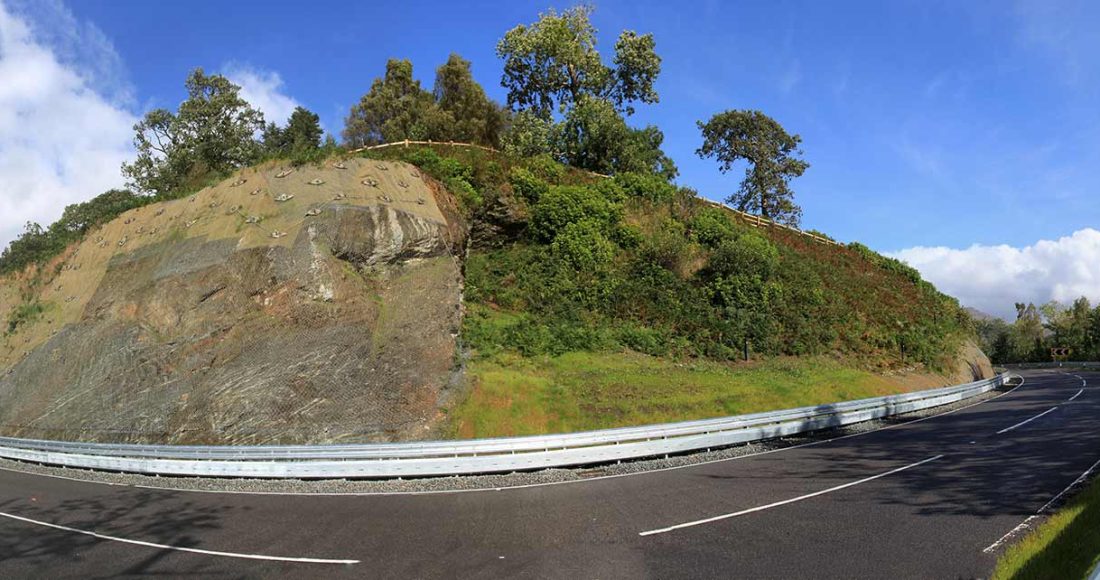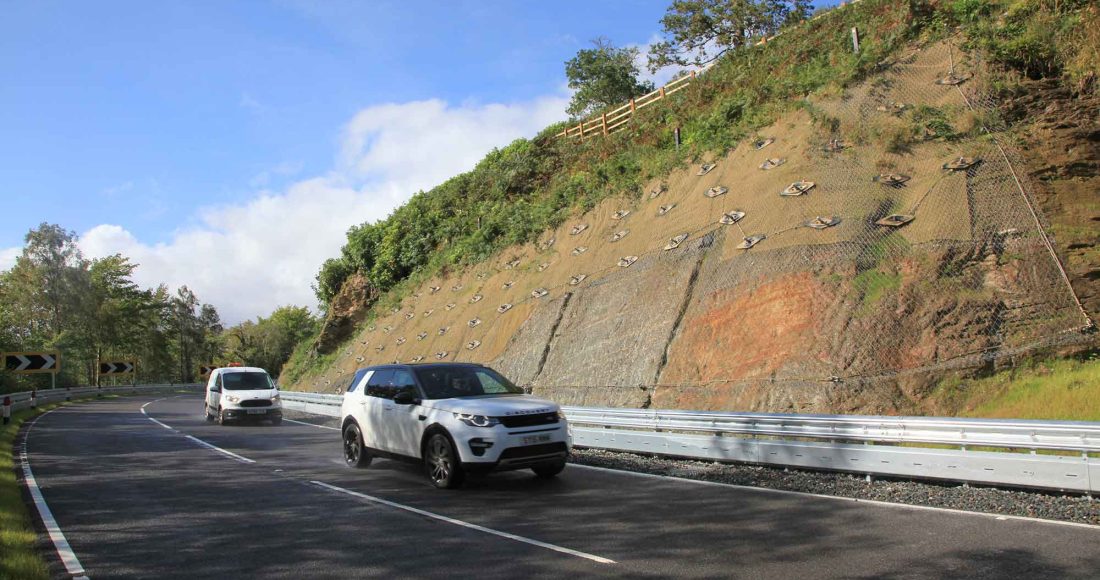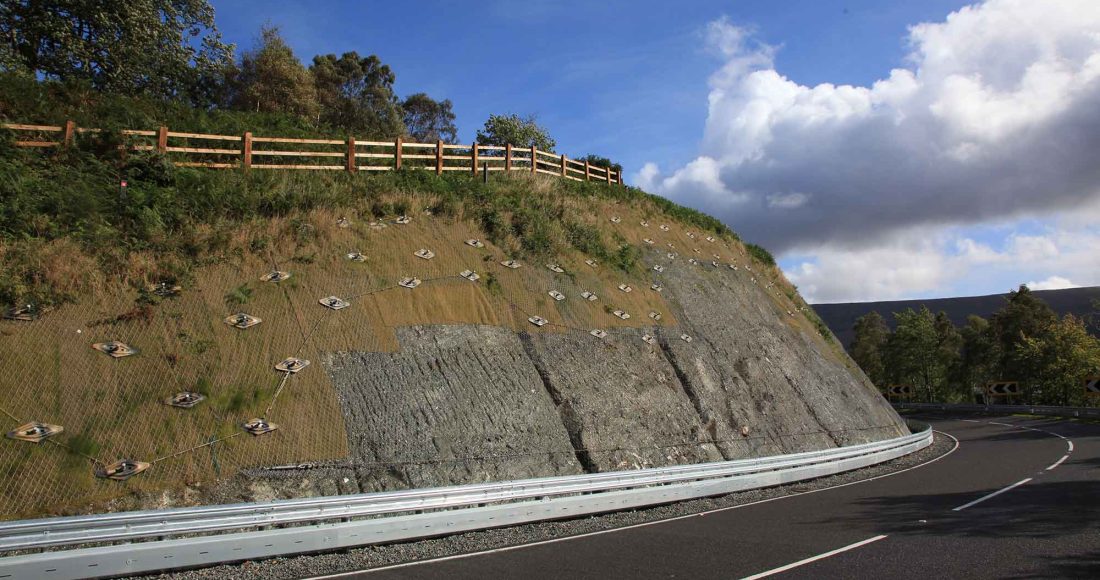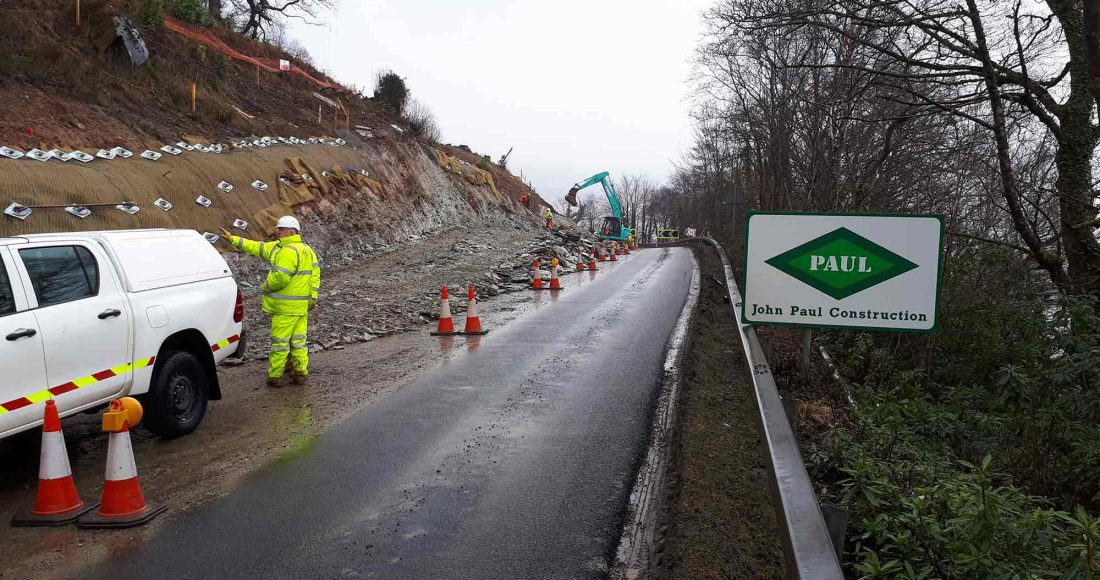Online road widening and improvement of road geometry and visibility sight lines on the section of A83 trunk road, which was an accident black spot. The project was located within a Site of Special Scientific Interest adjacent to the Firth with an AADT over 2,500. It was required that the road to be kept operation at all times during construction.
Project Overview
The project involved the online improvements to the carriageway cross-section, road geometry and visibility sight lines of the A83 trunk road through a Site of Special Scientific Interest (SSSI) adjacent to the Firth with an annual average daily traffic (AADT) of over 2,500. The A83 route links the Scottish towns of Tarbet, Arrochar, Inveraray, Furnace, Lochgilphead, Tarbert, Kennacraig, and the ferry port at Campbeltown.
Works included excavating into the existing hillside on the eastbound side of the carriageway, measuring 14,500m³, widening of the existing carriageway to trunk road standard and with fully flexible pavement, full depth road reconstruction, rock cutting with slope stabilisation, rock and soil nailing including the installation of mesh wire and shotcrete, drainage improvements, and other ancillary works.
Due to the length of the diversion route (21 miles), it was extremely important to the client that the road was only closed when absolutely necessary. Therefore, various rock and soil nailing techniques were introduced to allow the higher rock/soil nails to be installed by rope access construction methodologies rather than having to bring in larger long reach plant to site that would require road closures. The traffic management system developed for the project utilised single lane two-way running under traffic lights with a full-time Traffic Control Safety Officer and maintenance team on site for the duration of the works.
3D Modelling assisted with the project planning to graphically represent the proposed scope of works and ensure the appropriate construction methodologies and plant were selected to carry out the works in a planned and safe manner within the restricted road space available. The existing slopes were monitored during the construction phase to ascertain if there was any slope instability during the works with an emergency procedure put in place.
This was a build only project, however, our team attended several design meetings with the client and client’s designers to ensure the most appropriate type of slope stabilisation method was adopted.
Key Features
- Principle contractor for the completion of the entire works
- Stage excavation into the existing hillside to a height of 12m above road level consisting of both soil and rock (14,500m³)
- Rock and soil nailing including >600 excavator and rope accessed soil/rock nails of varying anchorage depth (2m to 5m)
- Extensive stage temporary works platforms to facilitate access
- Rock cutting with slope stabilisation between 26.5 and 56 degrees.
- 1,000m² of high tension mesh matting and netting
- Road markings and fencing works
- 155m of reinforced retaining wall structures approx. 1.6m high
- Extensive temporary traffic management and works sequencing

Project Team
Client:Transport Scotland
Architect:
Bear Scotland
Project Details
Contract Value:€2.1 Million
Floor Area:
0.4 km
Duration:
7 Months



